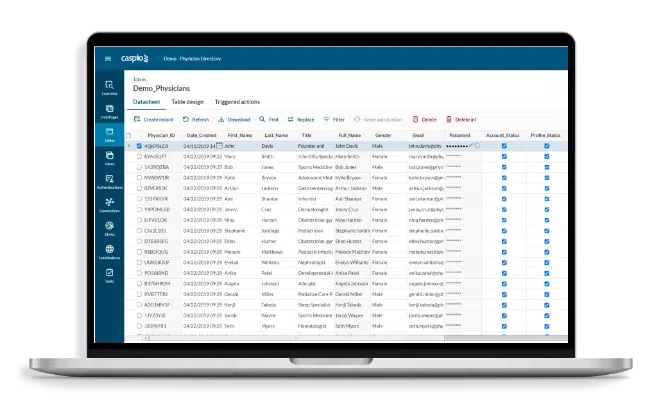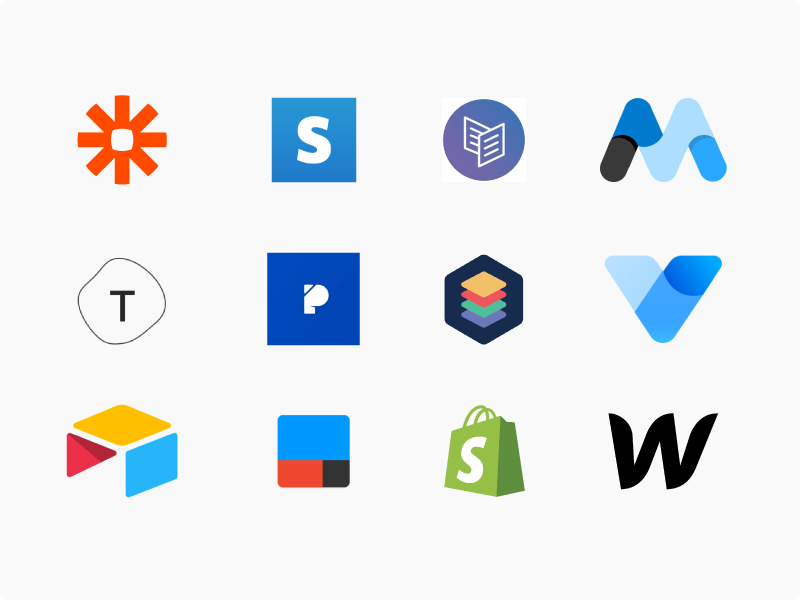Open the Power of No-Code for Open Platform Database Production
Wiki Article
Checking Out the Benefits of Scalable Data Sources That Call For No Coding Skills for Reliable Data Monitoring Solutions
The appearance of scalable data sources that eliminate the need for coding abilities provides a transformative possibility for organizations looking for reliable information administration options. By enabling non-technical users to harness the power of information through intuitive interfaces, these systems boost availability and foster partnership across diverse teams. Additionally, their cost-effectiveness and versatility to progressing organization demands can dramatically enhance operational processes. As we think about the implications of such advancements, it ends up being essential to take a look at how they can reshape the landscape of data administration and drive lasting growth in an affordable environment.Improved Accessibility for Individuals
Boosted accessibility for users is an essential facet of scalable data sources, guaranteeing that information monitoring systems are user-friendly and user-friendly. In an era where data-driven decisions are extremely important, access allows a bigger series of users, including those without comprehensive technological know-how, to engage with data source systems effectively. This democratization of information accessibility assists in boosted cooperation throughout departments, equipping employees to remove insights and make educated decisions.Easy to use user interfaces, such as drag-and-drop features and visual data depiction, streamline complex information interactions. These enhancements decrease the discovering curve related to standard data source administration, enabling users to concentrate on leveraging data as opposed to coming to grips with technical intricacies. Moreover, scalable data sources often incorporate real-time analytics and customizable control panels, offering customers with instant understandings tailored to their details requirements.

Cost-Effectiveness and Resource Financial Savings
Efficient data management not only hinges on access however also on cost-effectiveness and resource financial savings. Scalable data sources made for individuals with no coding skills substantially decrease monetary burdens normally related to traditional data source monitoring systems. By getting rid of the requirement for specialized shows proficiency, organizations can designate their sources more effectively, focusing funds on core business activities rather than comprehensive training or employing experienced employees.Moreover, these data sources typically make use of cloud-based solutions, which better reduce expenses connected to equipment and maintenance. Organizations can scale their database options according to their demands, avoiding the expenses incurred from over-provisioning resources. This adaptability implies businesses can adjust to altering needs without sustaining unnecessary expenses, resulting in considerable long-lasting financial savings.
Furthermore, easy to use user interfaces simplify information entry and administration processes, decreasing the time invested on administrative jobs. This efficiency equates right into labor expense financial savings, allowing teams to concentrate on strategic efforts instead of regular upkeep. Generally, taking on scalable data sources that require no coding skills cultivates a more economical technique to information administration, allowing companies to maximize their resources while keeping high degrees of operational effectiveness.
Improved Collaboration Across Teams

Furthermore, scalable databases promote smooth interaction among group members. With easy to use user interfaces that require no coding skills, employees can conveniently produce, customize, and share records or dashboards tailored to their details needs. This democratization of data encourages non-technical customers to add insights, enhancing the collective atmosphere.
Additionally, these data sources support simultaneous access, enabling several individuals to work on the same dataset simultaneously. This attribute enhances performance, as teams can take part in joint information analysis without the threat of variation control issues. The ability to leave comments or notes directly within the data source better promotes dialogue and makes clear data interpretations.
Streamlined Information Monitoring Processes
In today's data-driven environment, organizations recognize the necessity of streamlined information monitoring refines to make best use of efficiency and accuracy. By leveraging scalable databases that need no coding abilities, organizations can simplify their data handling and decrease the intricacies generally linked with conventional data source systems. This ease of access encourages non-technical individuals to engage straight with information, helping with quicker decision-making and reducing reliance on specialized IT employees.Structured information management procedures boost process by automating regular tasks such as data entry, recognition, and reporting. Automated data combination ensures that info from various resources is aggregated flawlessly, removing silos and cultivating a linked view of critical company metrics (no-code). Furthermore, easy to use user click now interfaces permit employees to manipulate information quickly, allowing them to create insights that drive strategic efforts without the requirement for substantial training.
This performance not just accelerates functional procedures but additionally decreases the capacity for human mistake, ensuring that information continues to be precise and trusted. Eventually, streamlined information monitoring procedures through scalable databases lead to boosted efficiency, enabling companies to concentrate on core activities while making sure that their information monitoring practices are reliable and effective.
Scalability for Growing Businesses

For broadening ventures, the capacity to scale up or down is critical. A scalable database can manage an influx of information generated from new customers, items, or solutions, ensuring that organization operations stay uninterrupted. Furthermore, these additional resources data sources supply the capacity to take care of peak tons successfully, which is important during durations of quick growth or seasonal spikes.
Furthermore, many scalable data source solutions are developed with straightforward interfaces that need no coding abilities, equipping non-technical staff to take care of information efficiently (no-code). This democratization of information monitoring permits organizations to allocate resources strategically and minimize reliance on specialized IT workers
Inevitably, adopting a scalable data source not only improves operational efficiency but also fosters an environment where companies can innovate and advance without the restraints of standard data source systems. This flexibility placements companies for lasting success in today's competitive landscape.
Verdict
In verdict, scalable visit here databases that require no coding skills offer significant benefits for efficient data monitoring. By simplifying data administration processes and using scalability for growing organizations, such solutions enable companies to adapt to transforming demands successfully.Enhanced ease of access for customers is a critical element of scalable databases, guaranteeing that information management systems are instinctive and straightforward.Easy to use interfaces, such as drag-and-drop functions and aesthetic information representation, simplify intricate data communications. On the whole, taking on scalable databases that call for no coding skills cultivates a more economical method to data monitoring, making it possible for organizations to optimize their resources while maintaining high degrees of operational efficiency.
By leveraging scalable databases that call for no coding skills, organizations can simplify their information handling and decrease the intricacies generally connected with conventional data source systems - no-code.Structured information administration processes improve workflow by automating regular tasks such as information entrance, recognition, and reporting
Report this wiki page